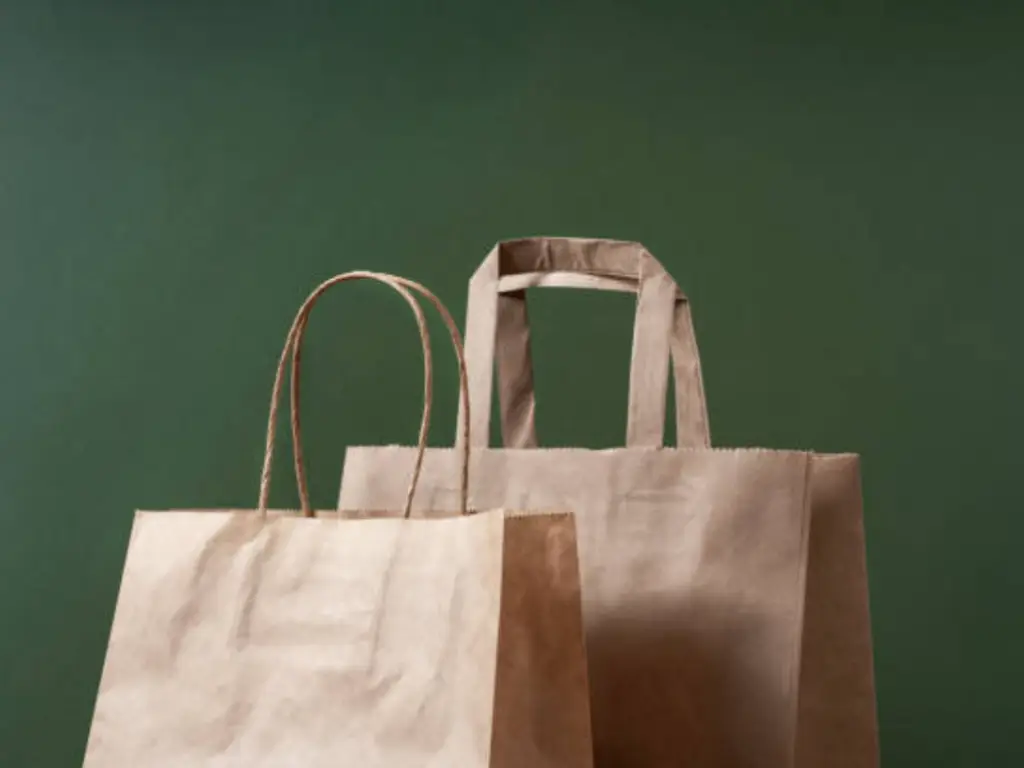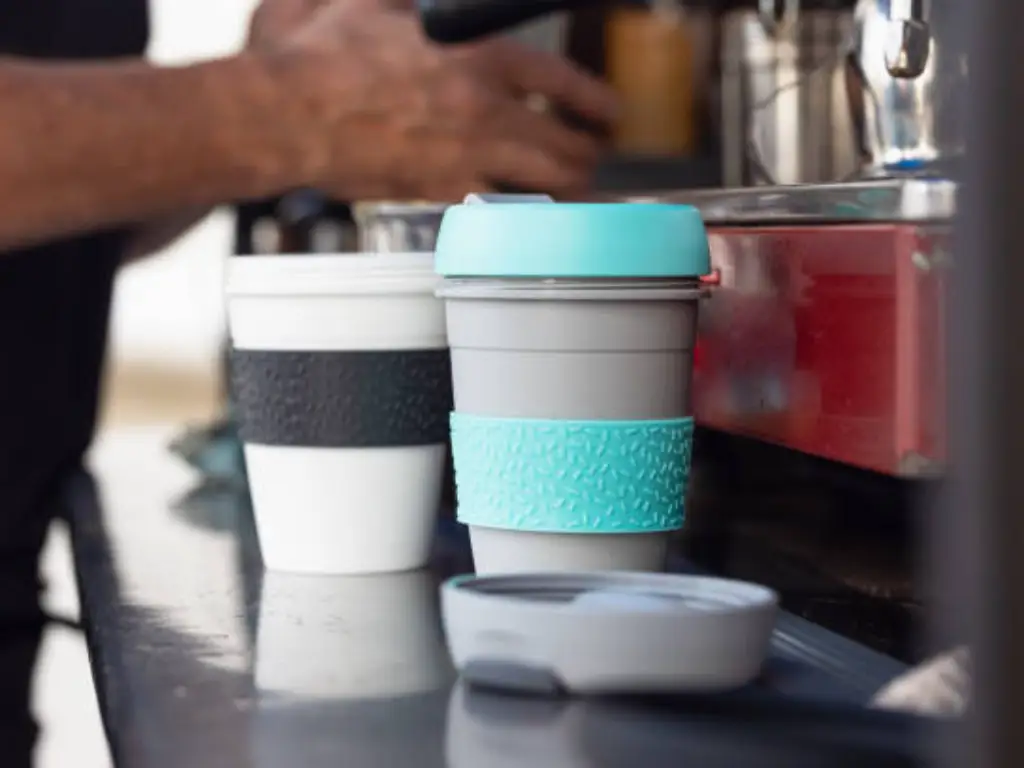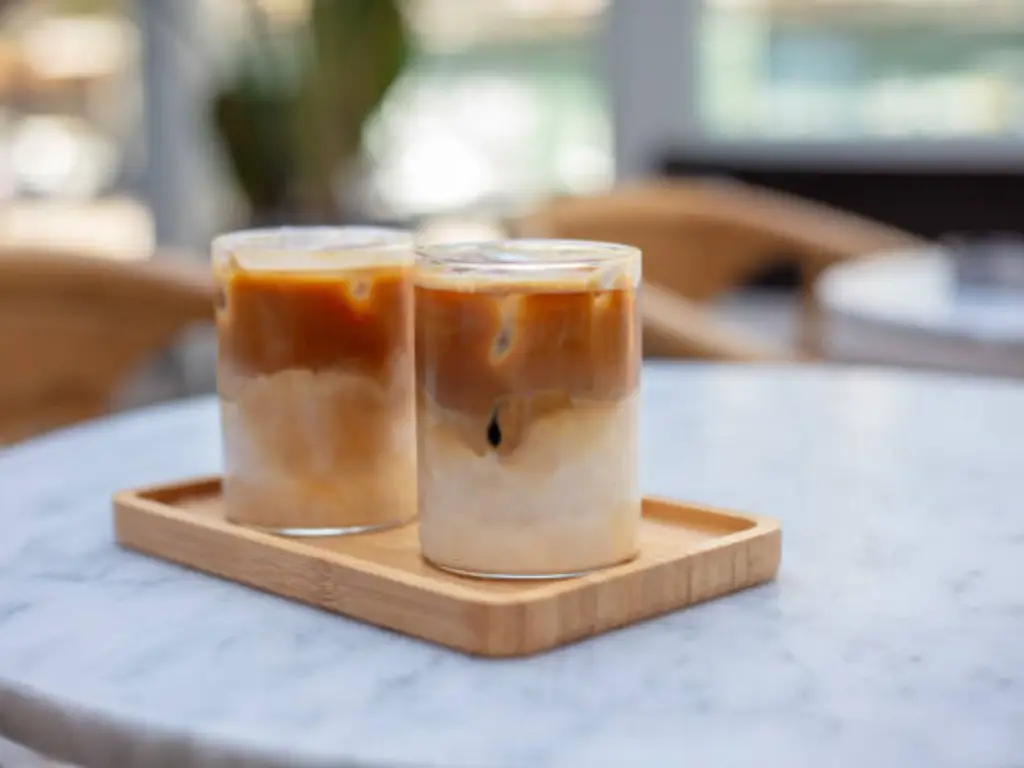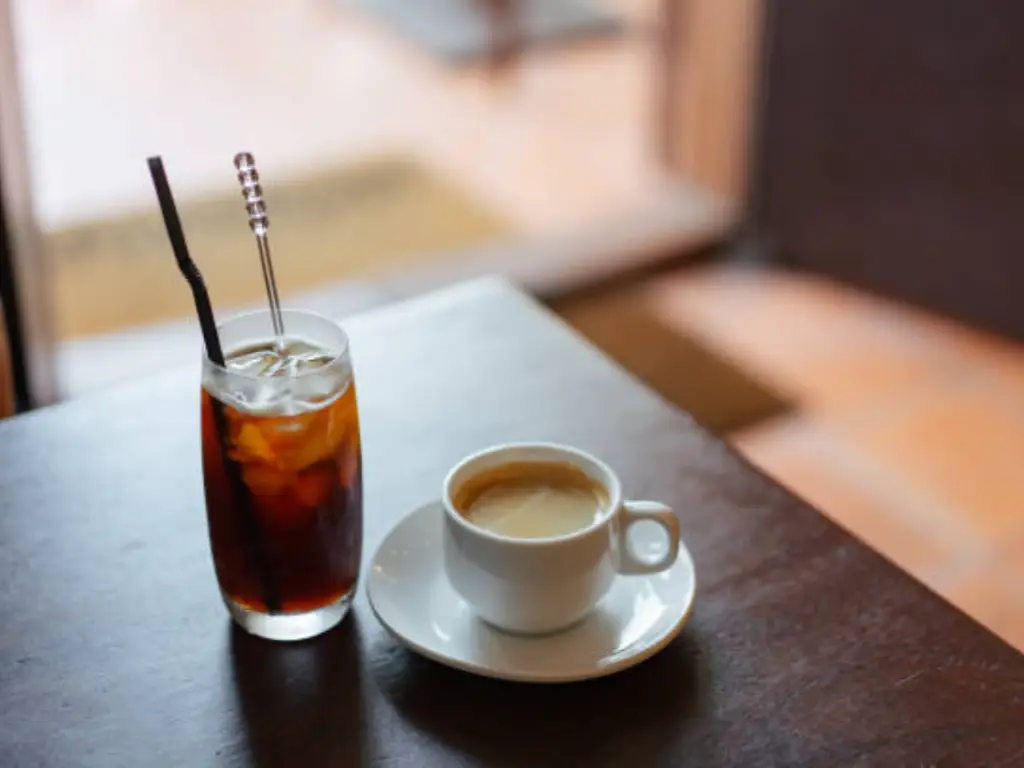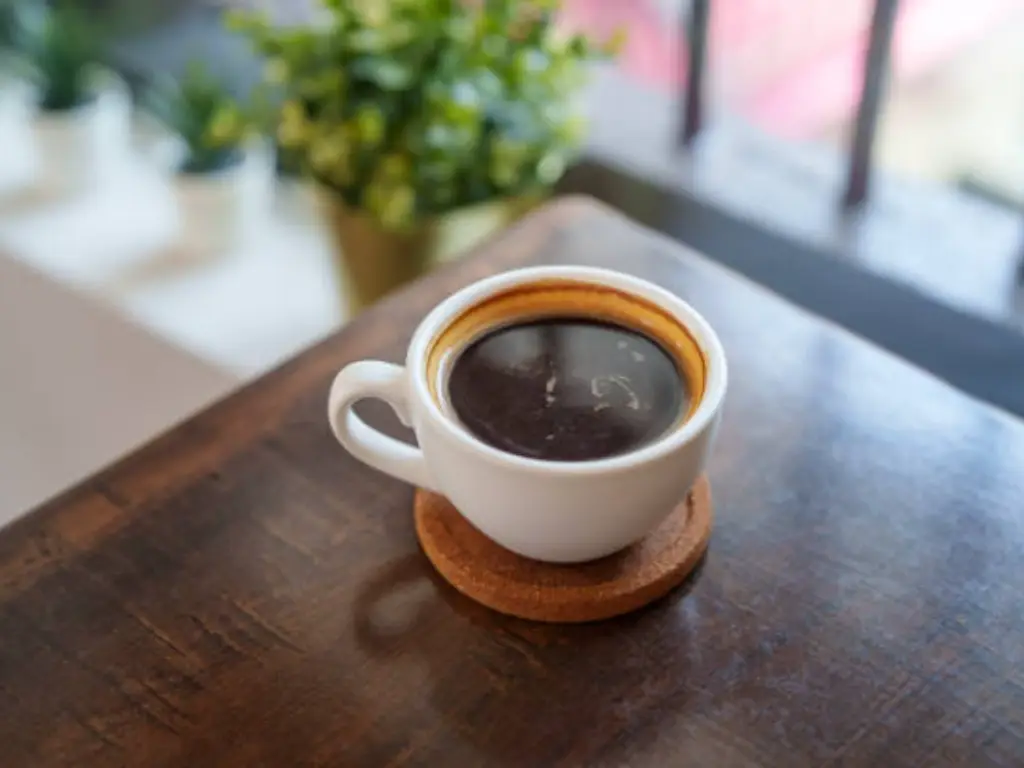
The coffee cup is perhaps the most significant tool that is involved in the process of drinking coffee on a daily basis, second only to the coffee itself. It is a container where we experience the aroma, temperature, and coffee flavour of well-prepared beans to brew. But a company is a complex decision that implies efficiency of the work, customer experience, brand identity, and high safety standards.
This guide may serve as a definitive reference in learning the differences in the functionality of types of coffee cups. We will examine the various materials, including the traditional ceramics, the commercially ubiquitous paper, and plastic. We will look at the engineering and design concepts that influence the drinking experience. Finally, we will provide a clear guideline to businesses on how to source, customize, and quality control. This is not merely a survey of possibilities but a detailed study of the variables that result in the selection of the ideal coffee cup.
Coffee Cup Materials: Reusable vs. Single-Use
The basic difference between coffee cup materials is their life span and usage. Reusable cups are the foundation of the classic, unhurried coffee experience, whereas single-use cups are designed to meet the requirements of convenience and contemporary trade. Each category has its own unique properties that make it appropriate in its own context, defining the world of coffee consumption.
The At-Home Ritual: Reusable Cups
The reusable cups have their foundational materials that have their own unique benefits:
- Ceramic: The classic coffee material, ceramic and its more sophisticated relatives, porcelain and stoneware, are known to have excellent heat retention. A pre-heated ceramic cup will keep the coffee at a high temperature so that the complex flavors can be released slowly. Its weight is satisfying, and its opaque nature draws the drinker to aroma and taste. Ceramic is non-porous and inert, which means that the only flavor you will taste is that of your coffee, and not that of the vessel itself. This renders ceramic mugs and cups the norm in specialty coffee shops across the globe.
- Glass: The main benefit of glass is aesthetic. A clear glass cup is used to make drinks with steamed milk and espresso, including a macchiato or a tall latte, into a work of art. It enables one to enjoy the deep color of a brew or the ideal layers of a latte. Although regular glass is less insulating than ceramic, double-walled borosilicate glass mugs are a technical wonder, with high thermal stability and cool to the touch.
- Stainless Steel: Stainless steel is the most durable and best insulator of all, making it the best choice when it comes to temperature maintenance. A vacuum-insulated travel mug will keep a cup of coffee hot or cold for many hours. Nonetheless, this is a material that is constructed with functionality rather than flavor subtlety in mind. Although it is ideal in transport, some purists say it can add a slight metallic flavor, which makes it less desirable when it comes to enjoying a single-origin shot of espresso where every nuance counts.
The Experience Depends on the Cup Shape
In addition to the material, the shape and the size of a cup are designed to fit a specific kind of coffee. Every design serves a purpose, and it is meant to emphasize the special features of the drink it contains.
- The Demitasse (Espresso Cup): The demitasse cup (French for half cup) is short, fat, and to the point. Having a standard capacity of 2-3 ounces (60-90 ml), it is just right to contain a single or a double shot of espresso. The most important aspect of it is its thick ceramic walls, which are necessary to reduce heat loss and maintain the temperature of the espresso. This stability is essential in preserving the fragile crema reddish brown foam that holds a lot of the aroma and body of the espresso.
- The Cappuccino Cup: A typical cappuccino cup is a bowl-shaped cup with a larger mouth and can hold 5-6 ounces (150-180 ml). This is not by chance, and the larger surface area is the ideal surface on which a barista can apply latte art, and the thick layer of microfoam can rest on the steamed milk and espresso. The rounded bottom assists the espresso blend properly as the milk is added, which results in a balanced first sip with a creamy consistency.
- The Latte Bowl or Cup: Since a latte has much more steamed milk than a cappuccino, the cup is larger, typically 8 ounces (240 ml) or larger. Latte cups are often in the shape of a wide bowl, which gives even more space to elaborate latte art. The shape also enables the drinker to hold their hands around the vessel, creating a warm and enveloping experience.
- The Mug: The coffee mug is the most common and the all-purpose coffee item. Its characteristic features are a comfortable handle and a large volume (10-16 ounces or more), which makes it the best option when it comes to serving large portions of brewed drip coffee or Americanos. Its simple, cylindrical shape is focused on volume and comfort rather than on the flavor-enhancing details of more specialized cups.
- The Travel Mug: The travel mug is all about being portable, and it is all about functionality. Its main advantages are superior vacuum insulation to keep the temperature for hours, strong stainless steel material, and a leak-proof lid with a tight seal. Although it will not present the aroma of an open-mouthed cappuccino cup, it will keep your coffee safe and at the right temperature when you need it the most.
Summary of Reusable Cup Types
The following table provides a clear comparison of these common reusable cup styles to help guide your selection.
| Cup Type | Typical Capacity | Primary Material | Key Design Feature | Ideal For |
| Demitasse Cup | 2-3 oz / 60-90 ml | Ceramic/Porcelain | Thick walls, small volume, narrow mouth | Serving a single or double shot of espresso, preserving crema and temperature. |
| Cappuccino Cup | 5-6 oz / 150-180 ml | Ceramic/Porcelain | Wide bowl shape, rounded base | A traditional cappuccino with the perfect foam topping; ideal for latte art. |
| Latte Bowl/Cup | 8 oz+ / 240 ml+ | Ceramic | Large, wide-mouthed bowl shape | Lattes with a high ratio of steamed milk; provides a large canvas for art. |
| Mug | 10-16 oz+ / 300-480 ml+ | Ceramic, Glass | Large handle, thick, straight walls | Large volumes of drip coffee or Americanos; prioritizes comfort and capacity. |
| Travel Mug | 12-20 oz+ / 360-600 ml+ | Stainless Steel | Vacuum insulation, spill-proof lid | Maintaining coffee temperature for a long time during transit or commutes. |
Convenience & Commerce: Single-Use Cups

In high-volume business settings and in-transit consumption, disposable cups are the standard of operation. The two common materials in this category are paper and clear plastic, each of which is used to serve a particular purpose.
Hot drinks are served in paper cups. The current paper cups are made of high-quality paperboard that should be obtained through reliable suppliers to make them strong and safe. The inside of the cup is lined with a waterproof lining to ensure that it does not leak and also to ensure that it is structurally sound. This lining is a very important element, which is usually made of polyethylene (PE) or a biodegradable material such as polylactic acid (PLA). The paperboard quality and the lining of this are the most important aspects of cup performance.
Cold drinks are served in clear plastic cups. Their clarity is one of the main functional features, which demonstrates the attractiveness of iced coffees, cold brews, and frappes. The most popular is Polyethylene Terephthalate (PET), which is selected due to its outstanding clarity, strength, and shatter resistance. Another option, Polylactic Acid (PLA), has a similar appearance and functionality, but is made out of plant-based materials, making it a commercially compostable product that is suitable for businesses with an eye towards sustainability.
Decoding Paper Cups: Single, Double, and Ripple Wall
The foundation of any paper cup is the paperboard, also known as cup stock. For reasons of food safety, hygiene, and performance, reputable manufacturers exclusively use high-quality virgin wood pulp fiber. Unlike recycled paper, virgin fiber ensures there are no contaminants and provides superior strength and rigidity. The paperboard’s thickness and stiffness, often measured in grams per square meter (GSM), directly impact the cup’s durability and premium feel. To ensure environmental responsibility, the most reliable suppliers use paperboard from sustainably managed sources, verified by certifications like the FSC (Forest Stewardship Council). Not all paper cups are constructed in the same way. Their design has a direct influence on their functional performance, particularly concerning insulation and the comfort of the user. For any food service business, the choice between single, double, and ripple wall construction is a critical operational decision that balances cost, customer experience, and brand positioning.
The table below outlines the key differences between these three primary types of paper cups.
| Paper Cup Type | Key Feature | Primary Use Case | Considerations |
| Single-Wall | A single layer of paperboard with a waterproof lining. | Cold drinks; Hot drinks that are served with a separate cardboard sleeve. | This is the most cost-effective option but requires managing a second inventory item (sleeves) for hot beverages. |
| Double-Wall | Two layers of paperboard separated by an insulating air gap. | Hot beverages such as lattes and Americanos, served without a sleeve. | This design streamlines service and provides a more premium feel, justifying a slightly higher unit cost by eliminating the need for sleeves. |
| Ripple-Wall | A corrugated, textured outer layer is bonded to a single-wall cup, creating air pockets. | Very hot beverages where maximum heat protection and a secure grip are prioritized. | Offers the best insulation and a distinct tactile experience, positioning it as a high-end choice for specialty coffee shops. |
The Clarity of Plastic: PET vs. Eco-Friendly PLA
When it comes to cold drinks, aesthetics is a major part of the experience, and plastic cups are very clear and durable. Nevertheless, the selection of plastic is a critical decision depending on the temperature of the beverage, the desired stiffness, and the end-of-life. Although PET and PLA are the most common materials used in single-use clear cold cups, other polymers such as Polypropylene (PP) and Polyethylene (PE) are also used in the food and beverage packaging industry, and play a vital role. Click here to learn more about paper cup materials.
The table below categorizes the properties and main uses of these four common plastics with respect to cups and containers.
| Material | Key Characteristics | Heat Tolerance | Primary Use in Cups & Containers | Recycling / End-of-Life |
| PET (Polyethylene Terephthalate) | Crystal-clear, strong, shatter-resistant, good aroma barrier. | Low (Cold use only) | The standard for single-use cold drinks: iced coffee, smoothies, sodas, juices. | Widely recycled (Resin Code #1). |
| PLA (Polylactic Acid) | High clarity (similar to PET), plant-based, rigid but more brittle. | Low (Cold use only) | An eco-friendly alternative to single-use cold drinks. | Commercially compostable; not suitable for standard recycling. |
| PP (Polypropylene) | Translucent (less clear than PET), durable, flexible, and chemical-resistant. | High (Microwave-safe) | Hot food containers (soups), reusable tumblers, and ome durable hot cup lids. | Recyclable (Resin Code #5). |
| PE (Polyethylene) | Waxy texture, flexible, tough, excellent moisture barrier. | Low (as LDPE lining) | The waterproof inner lining is in virtually all standard paper coffee cups; flexible lids. | Recyclable where facilities exist (Resin Codes #2 or #4). |
Clear Choices for Cold Drinks: PET and PLA
PET has long been the material of choice in high-volume commercial applications where clarity is paramount, as the table indicates. Its glass-like look displays the beautiful layering of coffee, textures, and colors of cold brews and frappes, and its strength will not crack under pressure. Moreover, it is one of the most recycled plastics in the world, which makes it a well-known and trusted material by businesses and consumers. PLA is a direct competitor to PET in the cold cup market, with essentially the same clarity and performance but a different environmental profile. Made using renewable materials such as corn starch, PLA is intended to be commercially composted, and is a strong statement of brand values to companies with a strong sustainability message.
The High-Heat Specialist: PP
Polypropylene (PP) fills a gap that PET and PLA cannot: heat tolerance. Although PET is a warping material at high temperatures, PP is stable and is therefore the material of choice in hot soup containers, reusable microwaveable tumblers, and many durable lids that are used to hold hot beverages. Although it is not crystal clear, its flexibility and high melting point make it safe and functional to hold hot contents, and this makes it play a crucial role that complements the cold-cup specialists.
The Unseen Workhorse: PE
Lastly, Polyethylene (PE) in its Low-Density form (LDPE) is the unsung hero of the beverage cup world. Though not as prevalent as the main body of a cup, it is the waterproof lining of virtually every single-wall and double-wall paper coffee cup. This is an extremely thin plastic film that keeps the paperboard dry and does not allow it to lose its structural integrity. It is flexible and has moisture-barrier qualities, which make it ideal in this application, along with some more malleable lids. To understand how a typical paper cup of coffee is engineered, it is important to understand the role of PE.
Beyond Material: How Cup Design Elevates the Coffee
Material is a necessary ingredient, but the interior design and engineering of a single-use cup are vital to its functionality and drinking experience. These are the details, often minor, that are the result of thoughtful production to deal with specific concerns of transportability and use.
The rolled rim on the top of the cup is a very significant design element. This seemingly insignificant detail serves two purposes namely, it provides structural rigidity to the opening of the cup, so that it does not deform when handled. Second, and more to the point, it creates a smooth and even surface that creates a leak-proof and tight seal with a matching lid. Improper or irregularly shaped rims are a key contributor to lid-fit issues and leakage, which leads to poor customer experience. One of the indicators of the quality of manufacturing is the accuracy of the rim-rolling process.
The other significant aspect that is directly linked to the type of beverage being served is sizing, particularly the size of the flat white cup. The industry has developed standard volumes that are related to the traditional coffee drinks. A 6-oz or 8-oz cup is typical for flat whites or cappuccinos, mimicking the proportions of their ceramic counterparts. A bigger coffee cup, such as 12oz, 16oz, or even 20oz, is characteristic of lattes and Americanos, as they can contain more milk, water, and the desire of a customer to have a bigger portion. This standardization allows consistency in recipes and prices, which is a major factor in the operational efficiency of any coffee-serving establishment. The engineering of these apparently simple vessels is a testimony to the planning that must go into contemporary food service. Click to read the blog detailing coffee cup sizes.
The Blueprint for Commercial Cups: Quality, Branding & Sourcing

When it comes to any business, choosing a coffee cup is about more than just functionality. It is a business decision that affects how your brand is perceived, how your operations are run, and how safe your customers are. A good sourcing strategy is based on a solid grasp of the fundamental requirements, branding opportunities, and non-negotiables of quality control. This section offers a manufacturer’s guide to these important issues.
Key Sourcing Factors
The first phase in sourcing is to specify the main functional requirements. The decision to use paper or plastic is based on the temperature of the beverage: paper when hot and plastic when cold. In paper cups, single, double, or ripple wall construction is a trade-off between unit cost and desired customer experience. The most cost-effective cup is a single-wall cup with a sleeve, whereas a double-wall cup is more insulated and sleeker in appearance.
In addition to the structure of the cup, regulatory compliance is the most important aspect. All the materials should be certified as food-safe by the corresponding authorities, e.g. FDA in the United States or the LFGB in Europe. Sustainability certifications are essential to businesses that aim to attract environmentally conscious consumers or those that are in markets with stringent regulations. The Forest Stewardship Council (FSC) logo, e.g., certifies that the paperboard is made with the use of responsibly managed forests. It is a must that a manufacturer has globally recognized certifications such as BRC (Brand Reputation through Compliance) and ISO 9001. These certifications are not mere logos, but they are evidence of a systematic approach to quality management and food safety of a supplier.
Bringing Your Brand to Life
A disposable cup is one of the most effective marketing tools available to a food service business. It is a mobile billboard that places a brand directly into the hands of its customers and the public. Achieving a high-quality, consistent brand representation on a curved surface, however, requires technical expertise and a collaborative partnership with the manufacturer.
The process begins with high-resolution artwork, typically in a vector format (.ai, .pdf) to ensure sharpness at any scale. To achieve perfect color fidelity, brands must use a standardized color system like the Pantone Matching System (PMS). This allows the manufacturer to replicate the exact brand colors, regardless of the production run. Advanced printing technologies such as Flexography (Flexo) and Offset printing are employed to apply these designs with precision, using only food-grade, low-odor inks based on soy or water.
The partnership with the supplier is key. A professional manufacturing partner, such as Yoonpack, will typically offer free design support to help clients optimize their artwork for the best printing results. Furthermore, a streamlined proofing process is essential. Leading suppliers provide digital proofs for approval within a business day and can ship physical samples in as little as 48 hours. This agility is crucial. Equally important is flexibility in order volume. The ability to support lower Minimum Order Quantities (MOQs) enables smaller businesses and even larger chains to test a new design to access high-quality custom printing. This level of service transforms a simple transaction into a strategic partnership. The Unseen Guarantee of Quality
The most critical component of a commercial coffee cup is the one customers only notice when it fails: its quality. A leaking seam, an ill-fitting lid, or an off-putting chemical smell can instantly damage a customer’s trust and a brand’s reputation. This is why a manufacturer’s Quality Control (QC) process is the ultimate determinant of a cup’s value.
A rigorous QC program is a multi-stage, systematic process. It begins with the inspection of raw materials for correct grammage, thickness, and safety compliance. During production, checks must be performed relentlessly. In top-tier facilities, automated systems and human inspectors conduct quality checks at least hourly. These tests include leakage tests, lid-fit checks, and sensory tests for any residual odors from inks or materials.
The most disciplined manufacturers adhere to a “zero defect” philosophy. If a single flaw is found during a check, the entire production run since the last successful inspection is quarantined and discarded. This uncompromising standard is the only way to approach a 100% leak-proof guarantee. To ensure full accountability, each cup should be marked with a traceability code, identifying the exact production line, date, and time. This meticulous attention to detail is the unseen guarantee behind every reliable cup and is the foundation of a supplier’s ability to offer a comprehensive quality warranty and a hassle-free claims process—critical factors in any long-term business relationship.
Making the Right Choice: A Practical Checklist

The last step is to implement the knowledge gained in materials, design, and commercial aspects. The checklists below are aimed at making the decision-making process easier for both individual coffee lovers and business buyers. For the Coffee Enthusiast
When you purchase coffee, the cup is part of the product. Pay attention to how it performs.
- Is it hot to the touch? If you need a sleeve for a paper cup, it is a single-wall design. A cup that is warm but comfortable to hold is likely a double-wall or ripple-wall cup, indicating a focus on customer comfort.
- Does the lid feel secure? A well-made cup will have a tight, confidence-inspiring seal with its lid. There should be no drips or leaks when you drink.
- How does it feel? Note the sturdiness of the cup. A premium cup will feel rigid and robust, not flimsy. These small details reflect the coffee shop’s overall commitment to quality.
For the Business Buyer
The choice of a supplier for your business is a long-term strategic choice. Use this checklist to screen possible manufacturing partners.
- Specify Your Requirement: Hot or cold drinks? This will decide the main material (Paper or Plastic).
- Define the Experience: How much do you want to spend, and what level of customer comfort do you want? This will inform your selection of cup structure (e.g., Single-Wall vs. Double-Wall).
- Core Certifications: Does the supplier have non-negotiable food safety certifications such as FDA, LFGB, and BRC?
- Sustainability Credentials: Do they have documentation that shows they have sustainably sourced, e.g., an FSC certificate on paperboard?
- Assess Customization Capabilities: Do they have high-fidelity printing (Flexo/Offset), Pantone color matching, and design support? What are their MOQs?
- Interrogate the QC Process: Request information on their quality control processes. Do they have a policy on the frequency of inspection and traceability?
- Ask About Support: What is their lead time? What is their quality warranty and claims process? A clear and encouraging spouse is priceless.
Conclusion
The coffee cup is much more than a mere vessel; it is an object of complex engineering that is expected to satisfy a specific set of functional and commercial requirements. To the consumer, this information increases the enjoyment of the coffee experience. It is essential to a business. A carefully selected cup is a key asset that safeguards product quality, guarantees customer satisfaction, and acts as a crucial brand ambassador. It is not an afterthought but a part of your end product.
The logical next step is to put this knowledge into practice. The intricacies of material procurement, high-fidelity brand customization, and uncompromised quality assurance require an experienced partner. When you are prepared to create a coffee cup solution that is in line with your brand standards of excellence and design, we encourage you to speak to our experts.
Contact Yoonpack today to discuss your specific requirements and receive a complimentary evaluation of your packaging needs from our packaging experts. This is one of the most important elements of your customer experience that you should not leave to chance. Make a strategic choice and collaborate with a manufacturer that is committed to helping you realize your vision with accuracy and consistency.


